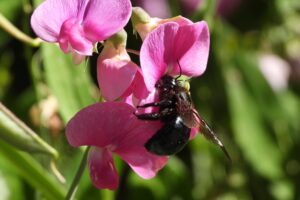
The buzz on campus this spring? UCLA’s native bees!
By Karen Hallisey What better way to celebrate March’s vernal equinox, marking the official beginning of spring, than to spotlight a superstar of the season – some buzzworthy Bruins known…

By Karen Hallisey What better way to celebrate March’s vernal equinox, marking the official beginning of spring, than to spotlight a superstar of the season – some buzzworthy Bruins known…